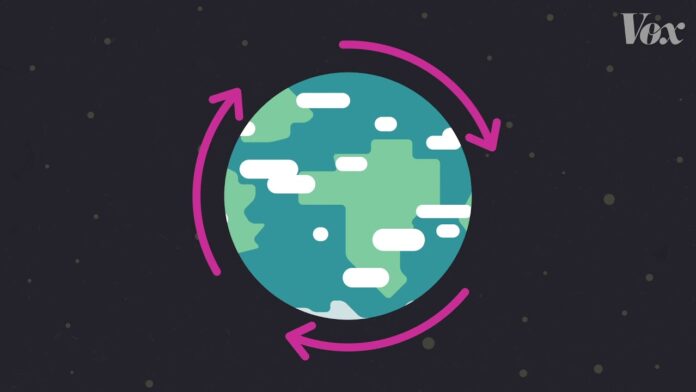The world is facing a climate crisis, and one of the most pressing issues is the rising sea levels. This phenomenon is caused by global warming and has been a growing concern for decades. As our planet continues to warm, the polar ice caps are melting, causing the oceans to rise. This poses a significant threat to coastal cities all around the world.
In this blog post, we will explore the causes of rising sea levels, the effects on coastal cities, and the impact on their economy and infrastructure. We will also discuss potential solutions and mitigation strategies that can help us combat this issue. It is crucial to understand the severity of this problem and take necessary action to protect our coastal cities from the consequences of rising sea levels.
Causes of Rising Sea Levels
There are several factors that contribute to the rising sea levels, but the main cause is global warming. The Earth’s temperature is increasing due to the greenhouse effect, where certain gases in the atmosphere trap heat and warm up the planet. This is primarily caused by the burning of fossil fuels, which release large amounts of carbon dioxide into the atmosphere.
As the Earth’s temperature rises, the polar ice caps are melting at an alarming rate. This includes both the Arctic and Antarctic ice sheets, as well as glaciers in mountainous regions. These ice caps contain vast amounts of freshwater, and when they melt, it runs off into the oceans, causing them to rise.
Another contributing factor to rising sea levels is thermal expansion. As the Earth’s temperature rises, so does the temperature of the ocean water. This causes the water molecules to expand, taking up more space and resulting in a rise in sea levels.
Effects on Coastal Cities

Coastal cities all around the world are already experiencing the effects of rising sea levels. One of the most immediate and visible impacts is shoreline erosion. As the sea levels continue to rise, the waves become stronger and more destructive, causing the coastline to recede. This not only affects the natural landscape but also puts coastal infrastructure at risk.
Flooding is another major consequence of rising sea levels. As the ocean water rises, it spills over onto land during high tide events and storm surges, causing severe flooding in coastal cities. This can result in property damage, displacement of residents, and even loss of life.
Rising sea levels also pose a threat to freshwater sources in coastal cities. As the ocean water seeps into underground aquifers, it contaminates the freshwater supply and makes it undrinkable. This can have severe consequences for both human consumption and agricultural use.
Impact on Economy and Infrastructure

The impact of rising sea levels goes beyond environmental effects; it also has a significant economic impact on coastal cities. The cost of repairing and rebuilding infrastructure damaged by shoreline erosion and flooding can be exorbitant. Coastal cities are also at risk of losing valuable land to the ocean, which can affect property values and lead to economic losses.
Another economic impact of rising sea levels is the potential loss of tourism revenue. Many coastal cities rely heavily on tourism as a source of income, and if these areas become inundated with water or suffer from frequent flooding, tourists may choose to go elsewhere, leading to financial losses for the city.
Furthermore, the loss of freshwater sources due to contamination can have a severe impact on agriculture and industries that rely on clean water. This can lead to food shortages and further economic consequences for coastal cities.
Potential Solutions and Mitigation Strategies
In order to combat the issue of rising sea levels, it is crucial to address the root cause, which is global warming. Implementing measures to reduce carbon emissions and slow down the rate of global warming is essential. This can include promoting the use of renewable energy sources, such as solar and wind power, and reducing our reliance on fossil fuels.
Coastal cities can also implement measures to protect their shorelines and infrastructure from erosion and flooding. This can include building seawalls and installing natural barriers such as mangroves, which can help absorb the energy of waves and reduce the impact of storm surges.
Another strategy is to elevate buildings and critical infrastructure to higher ground to protect them from flooding. This approach has already been implemented in some coastal cities, such as New York City, where they are raising the elevations of streets and installing flood barriers to protect against future storms and sea level rise.
In addition to these measures, it is essential to adapt to the changing climate by creating more resilient cities. This can involve building new infrastructure with rising sea levels in mind, such as elevated roads and drainage systems that can handle increased flooding.
Conclusion
The rising sea levels pose a significant threat to coastal cities around the world. It is crucial for governments and individuals to take action to reduce carbon emissions and slow down the rate of global warming. Implementing measures to protect coastal cities from shoreline erosion and flooding is also essential.
We must also adapt to the changing climate and create more resilient cities to mitigate the effects of rising sea levels. This includes elevating buildings and infrastructure and implementing natural barriers to protect against storm surges.
It is time for us to recognize the severity of this issue and take necessary action to protect our coastal cities from the consequences of rising sea levels. By working together, we can make a difference and ensure a safer and more sustainable future for all.









